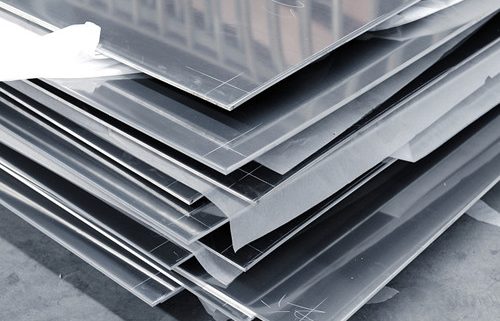Comparison of 301, 301L, 301LN steel plate
301 stainless steel is a type of austenitic stainless steel with a high work hardening rate. Its tensile strength can be up to 1300MPa or more. 1/16 hard to full hardening cold-rolled 301 plates are available and maintain sufficient ductility under 1/2 hardening conditions. It can be used for aircraft components, structural components of buildings, especially railway carriage components after rolling or bending. The 3/4 hardening to full hardening cold-rolled sheets should be used for simple component designs that require high wear resistance and elasticity. The 301L and 301LN are low carbon versions and high nitrogen versions of the 301. If better ductility is required or thick section profiles are to be welded, the low carbon 301L is preferred. The higher nitrogen content of 301Ln can compensate for the lower carbon content. They are specified in ASTM A666, JIS G4305, and EN 10088-2.
Chemical composition of 301, 301L, 301LN
| Grade | C | Mn | Si | P | S | Cr | Ni | N |
| 301 | ≤0.15 | 2.0 | 1.0 | 0.045 | 0.03 | 16.0-18.0 | 6.0-8.0 | 0.1 |
| 301L | ≤0.03 | 2.0 | 1.0 | 0.045 | 0.03 | 16.0-18.0 | 6.0-8.0 | 0.2 |
| 201LN | ≤0.03 | 2.0 | 1.0 | 0.045 | 0.03 | 16.5-18.5 | 6.0-8.0 | 0.07-0.2 |
Mechanical property of 301, 301L, 301LN
| 301 Tempering
ASTM A666 |
Tensile strength, Mpa | Yield strength 0.2%, Mpa | Elongation (in 50mm)thick>0.76mm | Hardness, Rockwell |
| Annealed | 515 | 205 | 40 | / |
| 1/16 hard | 620 | 310 | 40 | / |
| 1/8 hard | 690 | 380 | 40 | / |
| 1/4 hard | 860 | 515 | 25 | 25-32 |
| 1/2 hard | 1035 | 760 | 18 | 32-37 |
| 3/4 hard | 1205 | 930 | 12 | 37-41 |
| Full hard | 1275 | 965 | 9 | 41+ |
Specification of 301, 301L, 301LN
| Grade | UNS No | Euronorm | JIS | |
| No | Name | |||
| 301 | S30100 | 1.4319 | X5CrNi17-7 | SUS 301 |
| 301L | S30103 | / | / | SUS 301L |
| 201LN | S30153 | 1.4318 | X2CrNiN18-7 | / |
Corrosion resistance
Similar to 304 stainless steel, it has good corrosion resistance in normal temperature and mild corrosion applications.
Heat resistance
Good oxidation resistance to temperatures up to 840°C (intermittent use) and 900°C (continuous use). Exposure above 400°C causes gradual loss of work hardening effect, and the strength at 800°C is equivalent to 301 of annealing. Under creep conditions, the strength of work-hardened 301 even decreases to lower than that of annealed 301.
Solution (annealing) treatment
Heated to 1010-1120°C and rapidly cooled and annealed at approximately 1020°C. Heat treatment will not harden it.
Cold working
301 stainless steel and its low carbon version 301L for the need of high strength occasions. It has a very high work hardening rate of about 14MPa/%Ra (for each 1% of cold working surface reduction, tensile strength increases by 14MPa), cold rolling and cold forming can achieve very high strength, a portion of the strain hardening austenite converted to martensite. 301 is not magnetic under annealing conditions, but strong magnetic after cold working.
Welding
301 can be used for all standard welding methods and mostly 308L filler metal can be used for 301 weldings. 301 stainless steel welds must be annealed for optimal corrosion resistance, whereas 301L or 301Ln welds do not require annealing. Welding and post-weld annealing both reduce the high strength caused by cold rolling, so spot welding is often used to assemble cold-rolled 301 parts which has a small heat-affected zone and the strength of the whole part is almost not reduced.
Typical applications
Rail vehicle structural parts-roll forming, bending forming, or stretch forming into profiles, also in sheet. Aircraft fuselage, road trailer, car hub cap, wiper holder, toaster spring, stove fixture, screen frame, curtain wall, etc.




